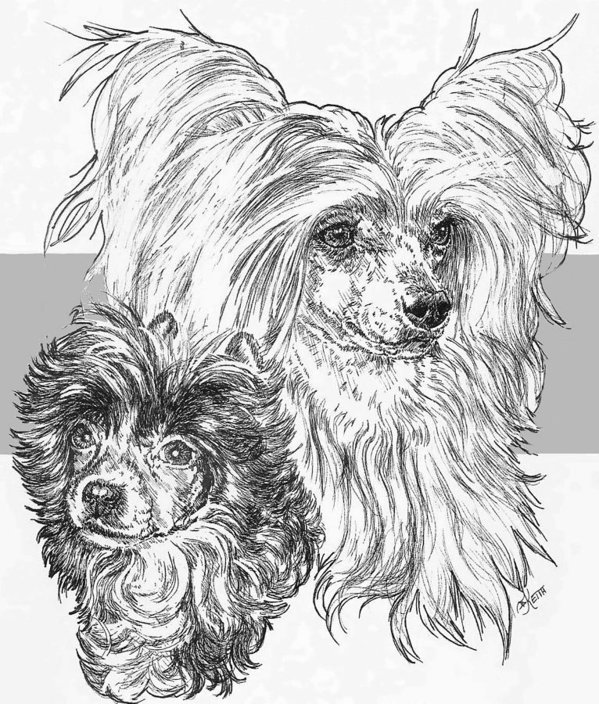
In the world of dog hair (which, for some of us, includes the couch, the carpeting, and every sweater we own), there is the term, “guard hair.” If you can imagine each little hair wearing a helmet and carrying a sword, you’ll get the idea of what a guard hair does.
Most coated dogs have two types of hair in their coats: Short fluffy or wooly hairs are called secondary hairs (what some refer to as underfur or undercoat). The second type of hair is the longer, coarser, and stiffer outer hairs called primary hairs, but many of us refer to them as “guard hairs.” Considered a dog’s primary coat, guard hairs (which are typically hard, straight, or sometimes wavy) protect the dog’s skin from superficial injuries, form an additional layer of insulation to repel moisture and dirt, and help protect the dog from cold weather. Technically speaking, there is a third type of hair, the vibrissa, or whiskers. Whiskers are called tactile hairs because they help the dog sense his surroundings. But we digress.
Breeds that have both an outer primary coat and the inner undercoat are said to have a double coat, while breeds that have a coat made up mostly of the primary coat with little or no undercoat are said to have a silky coat. All dogs have shorter secondary hairs, and longer guard hairs, and the ratio between them differ by breed and age. Newborn puppies don’t have guard hairs, that comes a little later.
Here’s a bit of not-dog-related trivia: Guard hairs can be modified to form defensive spines, the cuticular scales elongated to form barbs – and that’s what we see in a porcupine. And for a bit of really odd off-topic trivia, we came across a classified ad offering to pay at least $27 an ounce for porcupine guard hairs. Evidently, the buyer was needing them for “roach making.” And here we are presented with a choice. Was he using the guard hairs to make a “Porcupine Roach,” a native American headpiece? Or was he needing them to make a holding clip for a substance legal in ten states? We just don’t know, but we have digressed.
With warm weather summer coming for many of us, there is the temptation to shave a dog’s coat, but that’s not a good idea for most dogs, and not especially doubled coated breeds. Not only can the shaving result in improper re-growth of the coat, but for many breeds, the undercoat is insulating and actually keeps the dog cool in hot weather. Guard hairs don’t grow out as quickly as the undercoat, and sometimes they can’t grow back at all because they are crowded out by the faster-growing undercoat. This can result in color and texture changes in a dog’s coat, a patchy appearance to the fur, follicle damage and clogging, and the loss of the weather and water protection that guard hairs provide.
We conclude by mentioning that even the Chinese Crested Hairless has guard hairs, though it’s the powder puff variety that has long thin guard hairs over the short silky undercoat.
Image: Powder Puff Chinese Crested Hairless by Barbara Keith
http://barbara-keith.fineartamerica.com
http://barbara-keith.artistwebsites.com/
http://www.redbubble.com
http://www.zazzle.com/barbbarcikkeith
